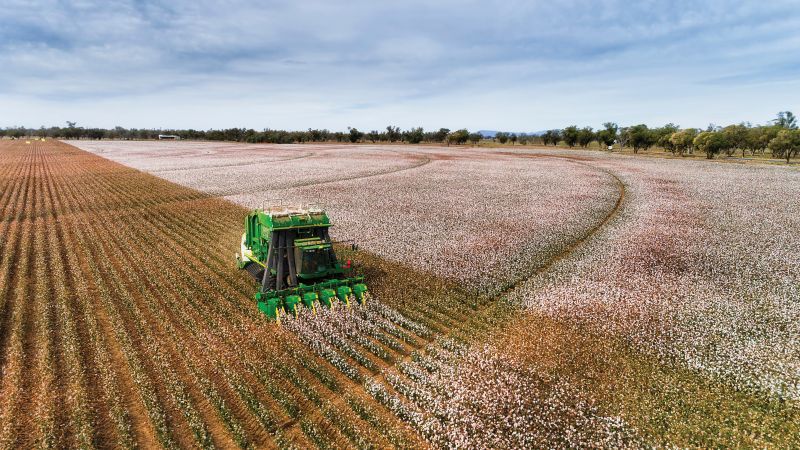Crop Scan AgReport: Cotton Planting Begins
Cotton in the southern Delta, south and central Texas, Arizona, and California is pretty much in the ground. And planting activity should begin in earnest by early-to-mid May in the Southeast and most parts of the Mid-South. Here’s what our consultants had to report for late April/early May.
Kerry Siders is Texas A&M AgriLife Extension Agent-IPM for Hockley, Cochran, and Lamb Counties.
We’ll soon be planting cotton here on the Southern High Plains of Texas. The most critical component to this equation is moisture, and it is missing. We have not had good measurable (> 1”) rain since October 1-2, 2021. Needless to say, we are in an Extreme Drought situation according to the U.S. Drought Monitor.
Producers here know that we supplement rainfall with irrigation and not the other way around. Our only prayer is that we will plant, we will get cotton up, and that we receive good rainfall in May and June.
We often focus so much on stand establishment during planting that we tend to overlook early insect, weed, and disease issues. Pests such as thrips, wireworms, seedling disease, and various emerging weed species can potentially rob us of stands, vigor, moisture, nutrients, and most importantly time. So, producers must have someone keeping an eye on already planted acres for all these pests. Whether it is the producer themselves or anyone who is trained to detect these pests and evaluate the health of the cotton, it is extremely important to take care of what is already emerged.
Tucker Miller is a Mississippi-based independent private consultant for cotton, soybeans, corn, peanuts, rice, and vegetables.
All of the cotton ground has been burned down at this time. We are still anticipating an increase in cotton acres in my area, probably around 10%. Some growers are knocking down rows and applying Reflex. They will wait on a rain, then be ready to plant when temperatures are right.
We were able to start planting in late April. Almost all acres will be planted in the Bollgard III varieties to help reduce insect control costs. We are hoping for a good early planting window. Hope everyone has a good year.
Chad Harrell owns and operates Harrell Agronomic Services in Northeastern North Carolina.
We have a little more certainty as we get closer to planting. It still looks like cotton acres in North Carolina will be up about 20%, followed by soybeans and far less corn acres than last year.
We are more optimistic now that we have completed burndown with the herbicide shortage. Our biggest concern is still increased input costs, especially fertilizer. We have become more creative with fertilizer applications this year by trimming rates where nutrients are available in the soil and delayed applications to maximize efficiency.
Most cotton growers in my area have finished burndown and fertilizer applications and are planting corn and soybeans as we wait for soil temperatures to improve. We’ve had a very dry winter and spring. Soil moisture could be a concern if we don’t continue to see some rainfall prior to planting. We should see cotton going in the ground soon if conditions are favorable.
Based in southwest Georgia, Wes Briggs consults on cotton, corn, peanuts, soybeans, and some small grains for growers in Georgia, Alabama, and Florida.
This is one of the roughest starts I can remember in a long time. We’ve had cool nights and cool mornings and need some hotter temperatures. We’re about 95% finished with corn planting. It’s anywhere from just planted up to the V6 stage.
It got down to 27 degrees on March 13, and that cold weather really put a hammer on our corn. A lot of the early corn is still trying to get its feet back under it. We also had some sand damage and high winds that set the crop back. We’ve had some pretty big rains and have lost some of our fertilizer. We’ve started some weed control sprays this past week. Anything planted before March 10 is just struggling. We need some warmer nights to get corn growing again.
We’re trying to get some sidedress fertilizer out. Growers have about $300 per acre in fertility costs already. I’ve had several growers tell me that if the second $300 doesn’t look any better than the first $300, they’re going to be in trouble with the corn they already have contracted.
Where we plant cotton, burndown has been going out. No one has started planting cotton yet, but there are some big weeks for peanut planting coming up. The earliest we would start planting cotton would be around April 20.
For the last five years, we haven’t had a good cotton crop. We’ve made cotton but haven’t been able to harvest it all for a number of reasons. Our later cotton has been our better cotton, so we’re not jumping out there to plant in a hurry this time.
Mark Nemec is a Texas independent agricultural consultant for cotton, wheat, grain sorghum and corn in the Blacklands and Brazos River Bottom area of Central Texas.
Ready, set, GO! Planting season has begun in Central Texas. We finally got warm and wet enough to plant. Our nights have been cooler than normal this year. Most of Texas is under a drought of some degree, making planting moisture hard to come by.
Residual herbicides are going out right behind the planters. We’re hoping they help control resistant weeds while over-the-top herbicides are in short supply. It looks like we’re going to have to dig deep in our tool boxes this year.
Acres look to be up this year due to good prices and less fertilizer needs compared to grain crops. Other input costs need to be managed carefully due to their high prices and availability.














